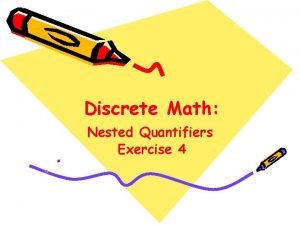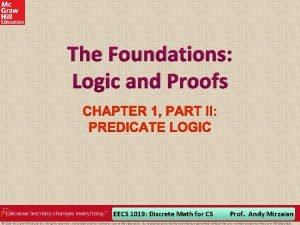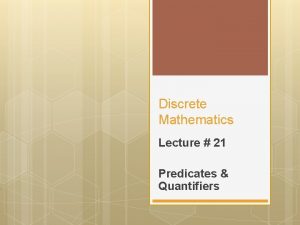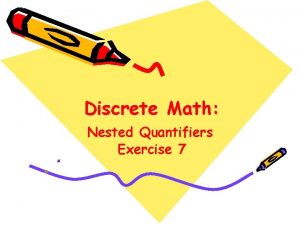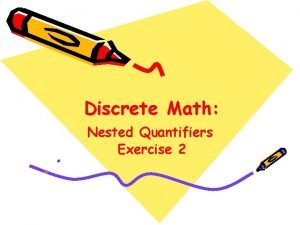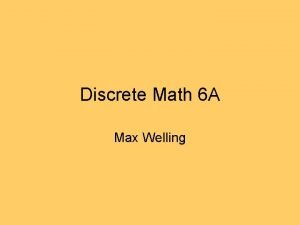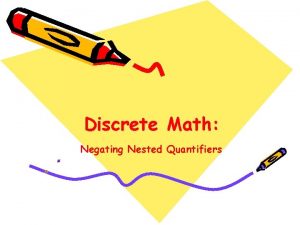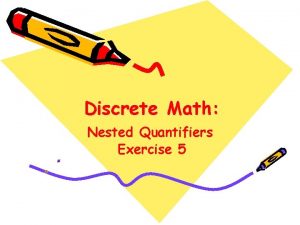Discrete Math Nested Quantifiers Exercise 2 Exercise Let





- Slides: 5

Discrete Math: Nested Quantifiers Exercise 2

Exercise Let Q(x, y) be the statement “x has sent an e-mail message to y, ” where the domain for both x and y consists of all students in your class. Express each of these quantifications in English. a) ∃x∃y. Q(x, y) b) ∃x∀y. Q(x, y) c) ∀x∃y. Q(x, y) d) ∃y∀x. Q(x, y) e) ∀y∃x. Q(x, y) f) ∀x∀y. Q(x, y)

Solution It is useful to keep in mind that x and y can be the same person, so sending messages to oneself counts in this problem. a) Formally, this says that there exist students x and y such that x has sent a message to y. In other words, there is some student in your class who has sent a message to some student in your class. b) This is similar to part (a) except that x has sent a message to everyone, not just to at least one person. So this says there is some student in your class who has sent a message to every student in your class. c) Note that this is not the same as part (b). Here we have that for every x there exists a y such that x has sent a message to y. In other words, every student in your class has sent a message to at least one student in your class.

Solution d) Note that this is not the same as part (c), since the order of quantifiers has changed. In part (c), y could depend on x; in other words, the recipient of the messages could vary from sender to sender. Here the existential quantification on y comes first, so it's the same recipient for all the messages. The meaning is that there is a student in your class who has been sent a message by every student in your class. e) This is similar to part (c), with the role of sender and recipient reversed: every student in your class has been sent a message from at least one student in your class. Again, note that the sender can depend on the recipient. f) Every student in the class has sent a message to every student in the class.

References Discrete Mathematics and Its Applications, Mc. Graw-Hill; 7 th edition (June 26, 2006). Kenneth Rosen Discrete Mathematics An Open Introduction, 2 nd edition. Oscar Le∀in A Short Course in Discrete Mathematics, 01 Dec 2004, Edward Bender & S. Gill Williamson
